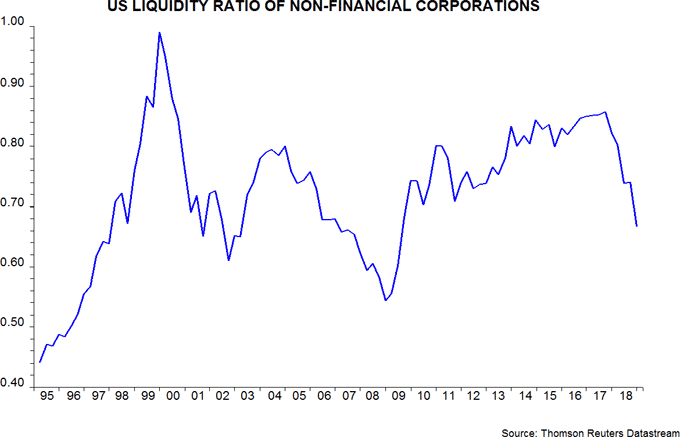Negative signals for US business spending
Two recent pieces of news support the expectation here that stockbuilding and business investment will be major drags on the US economy this year.
First, the ratio of inventories to final sales of goods and structures rose further in the fourth quarter, following a large third-quarter gain, according to initial national accounts data released last week. Changes in this ratio are inversely correlated with the future contribution of stockbuilding to GDP growth – see first chart. This relationship suggests a negative GDP contribution of up to 0.5%, or 1.0% at an annualised rate, during the first half of 2019. (This refers to the arithmetical contribution; the total impact would likely be smaller because of offsetting weakness of imports.)

Secondly, sector financial accounts released yesterday reveal a significant further decline last quarter in the liquidity ratio of non-financial corporations, defined as their liquid assets divided by short-term liabilities – second chart. The value of assets was depressed by losses on equity investments, while money holdings – including foreign deposits – grew by only 0.5% over the quarter; liabilities, by contrast, rose by 2.7% (11.1% annualised) as bank borrowing surged, in part reflecting involuntary inventory accumulation.

The corporate liquidity ratio fell by 18.9% in the year to end-December. An annual decline of 11% or greater occurred on 11 previous occasions since 1955 and in 10 of these cases non-residential fixed investment contracted on a year-on-year basis in the same quarter or subsequently – third chart. The exception was 1988 but this followed a major investment recession in 1986-87.


Reader Comments